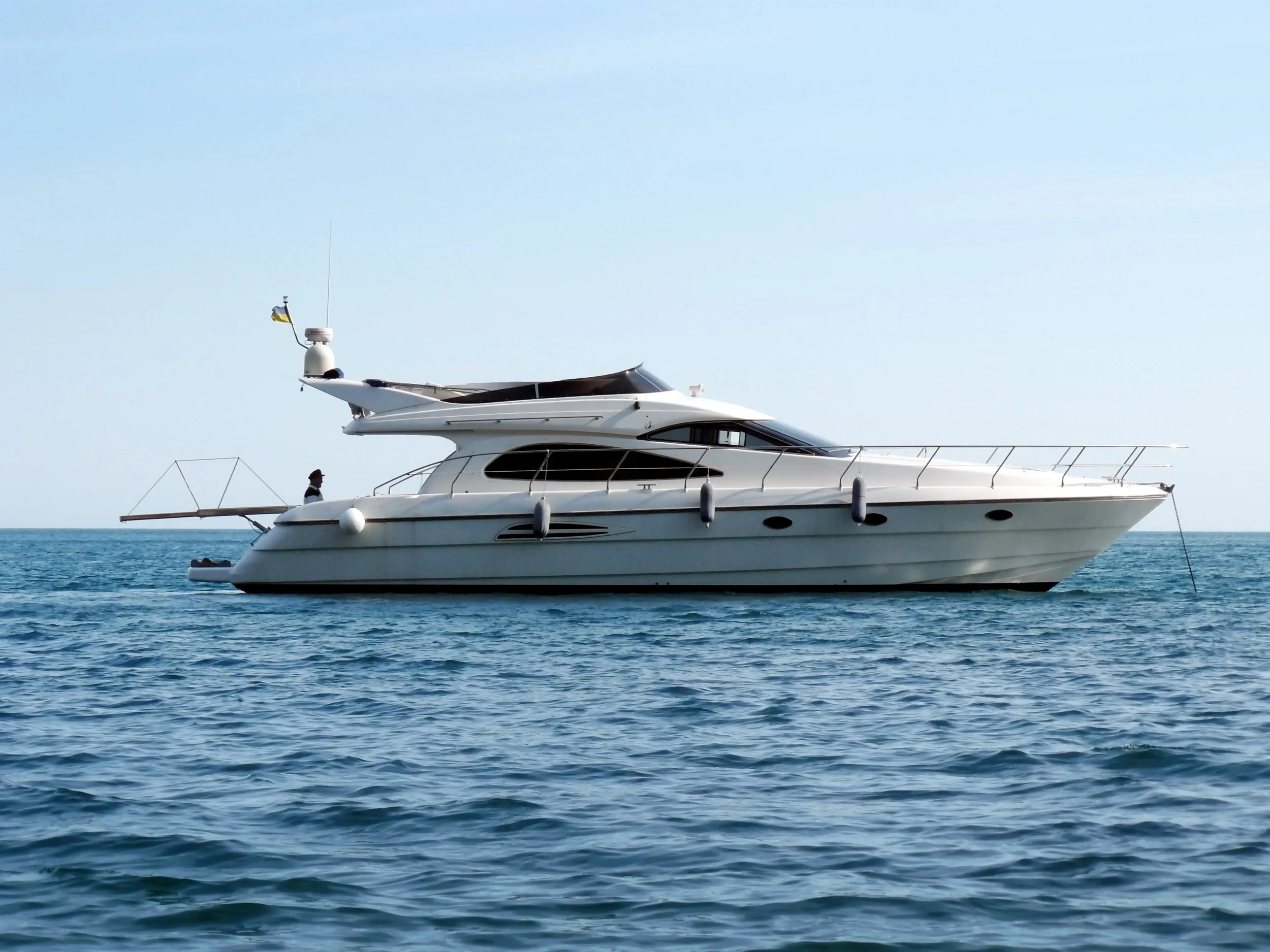A Guide to the Boat Stabilization Systems by Dacoma
First, let’s have a look at stabilizing systems
When it comes to boat stabilization, a number of different systems are on the market. The most common ones are interceptor or trim plate systems driven by electric motors and/or hydraulics to keep your vessel going in a straight line and keep it from rolling, ballast stabilization systems, mostly using ballast tanks filled with water, gyro stabilization systems (GSS), which regulate the roll of a ship by using gyroscopes, fin stabilization system (FSS), which helps stabilize ships against wind forces by placing fins on the sides of the vessel; and finally, Dacoma’s Airkeel stabilizer, based on an air-filled flotation body mounted to the extremity of cantable fin.
In this article, you'll learn what each system does, how they work together, and how to keep your boat stable, both underway and at anchor.
Interceptor stabilization systems
Interceptor or trim plate stabilization systems are the most common, active or passive stabilization systems. They can be driven by linear electric or hydraulic actuators. Control is achieved by using joysticks or wired/wireless remote controls, which allow you to adjust the pitch and roll of your boat for roll reduction and optimized trim. Active stabilization systems are usually more expensive than passive because they require extra equipment--but they're also more versatile since they can be used in all weather conditions. The common disadvantage of those systems is that they only are effective at medium or high speeds.
Ballast stabilization
Passive stabilization by water ballast uses the gravitational forces of water in ballast tanks to stabilize a vessel. The tanks are usually integrated inside at the sides of the ship. Passive stabilization systems are the most common in the market, but they're not as efficient as active stabilization systems.
Normally, the filling and bail-out times of the ballast tanks take longer time than the rolling of the boat and hence are not suitable for active roll damping.
Gyro stabilization
Gyro stabilization systems use high-speed spinning wheels to counteract angular motions, mainly in roll by gyroscopic forces. Gyro stabilization systems are bulky and heavy and hence are not so practical on-board. Another drawback is their limited efficiency for stiff boat designs with high metacentric heights, like catamarans. Most gyros also suffer from long spin-up times. Often, it takes 30min to one hour until they reach full rotational speeds and hence maximum stabilization performance.
Fin stabilization
Fin stabilizers are normally mounted horizontally to the sides of the vessel below the waterline. The working principle is based on hydrodynamic lift similar to small aeroplane wings. Most systems have active stabilization capabilities. They are most effective at higher speeds and usually are retracted at low speeds when approaching harbours or at anchor. Some fin stabilizers use reactive forces by fast paddling motion to achieve some limited roll stabilization while anchored.
The Airkeel stabilization
The Airkeel uses air-filled chambers located at the bottom of the keel to reduce roll and improve stability. It swings in an inverse-pendulum motion from side to side, actively counteracting roll motions in waves, swell or induced by heavy winds. Since the Airkeel stabilizer works with buoyancy, it leads to lighter, more stable boats with less resistance and hence lower fuel consumption. Adaptive control based on Machine Learning/AI, permits comfortable and safe boat rides in adverse weather, both underway and at anchor,
It is highly effective for both monohull and multihull vessels making it a viable choice for all types of boaters. In parking mode, the draft is minimized for safe operation in shallow waters, and in harbours.
The choice of stabilization system depends on your use case
Based on the information presented in this guide, it is clear that there are a variety of options available to boat owners seeking to improve the comfort and stability of their vessels. Whether you prioritize speed and excitement or a smooth, comfortable ride, there is a stabilizer system out there that can meet your needs.
It is important to carefully consider the unique features and advantages of each stabilizer system before making a decision. Taking the time to research and compare different options can help ensure that you choose a stabilizer that is the right fit for your vessel and your intended use.
Contact us if you want details about the Airkeel
At Dacoma, we are proud to offer a revolutionary boat stabilization system that combines advanced technology with unparalleled performance. Our system has been designed to deliver maximum comfort and stability at all speeds, making it an ideal choice for both thrill seekers and those who value a smooth, comfortable cruising experience. If you would like to read more about Dacoma’s Airkeel, have a look at this section.
Whether you are planning a day of high-speed thrills or a relaxing cruise with family and friends, Dacoma's boat stabilization system can help you get the most out of your time on the water. Contact us today to learn more about how it can improve your boating experience or fill out a quick questionnaire so we can get back to you with a customized solution just for you!
Contact us
Would you like to know more about Airkeel?
Or perhaps join one of our demoboat events? Book a tour with us and experience the performance for yourself.
Leave us your contact data and we will reach out to you as soon as possible!




